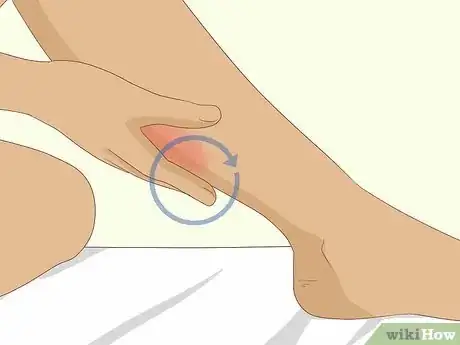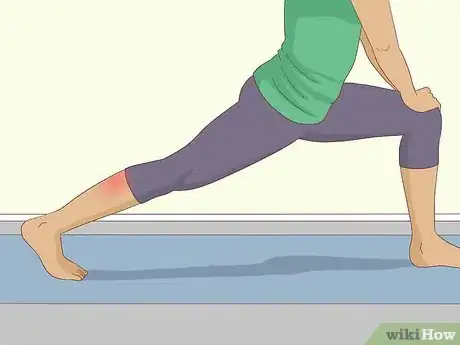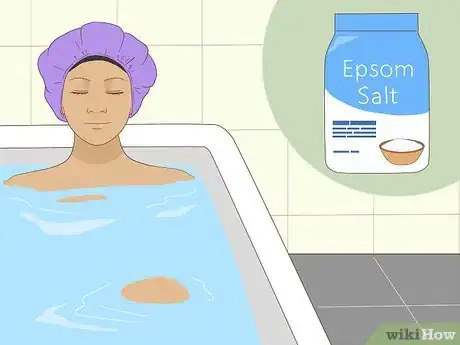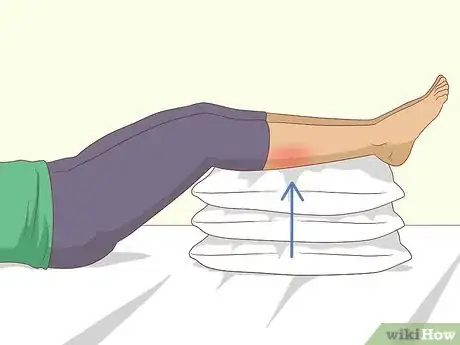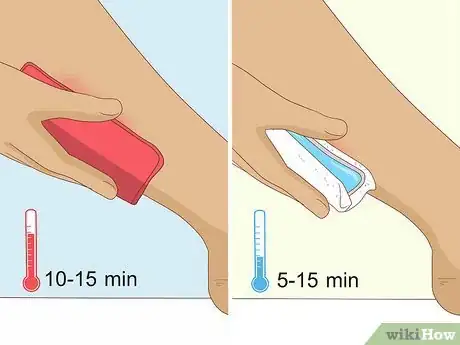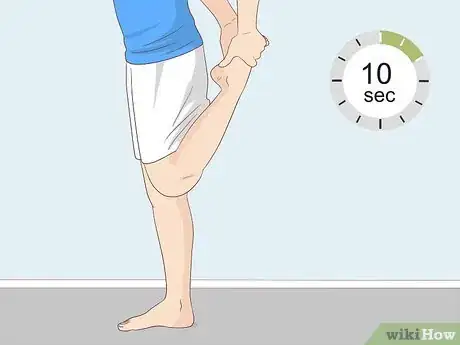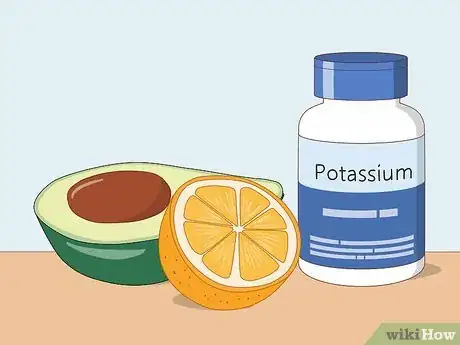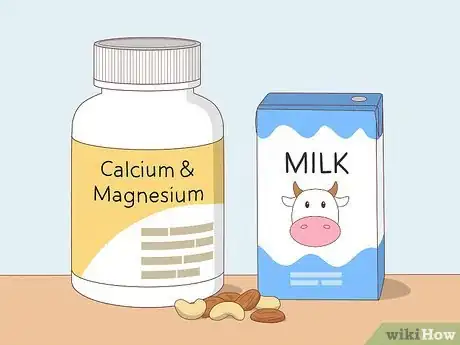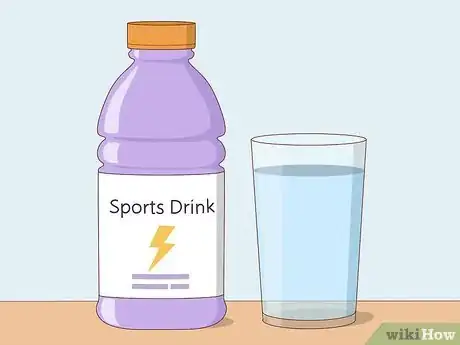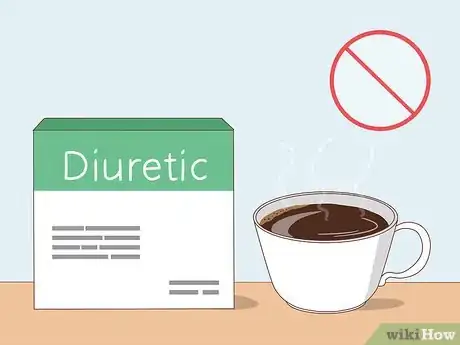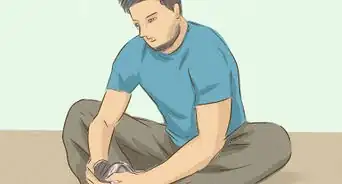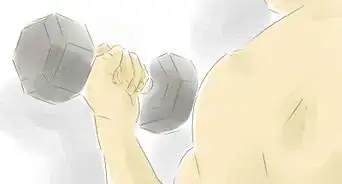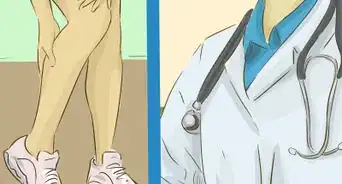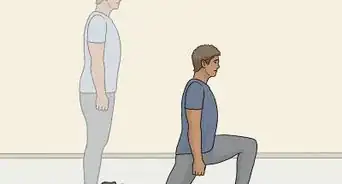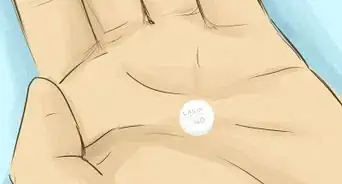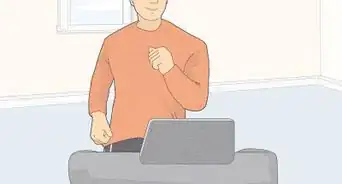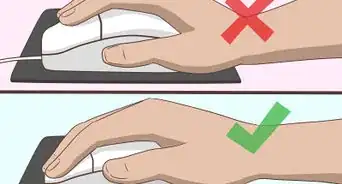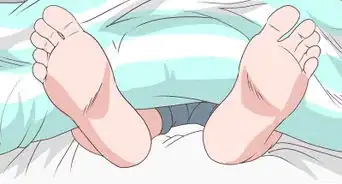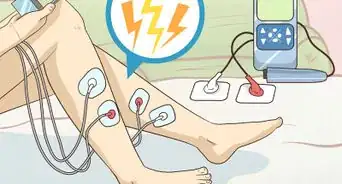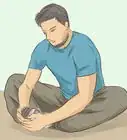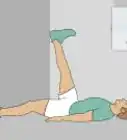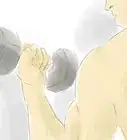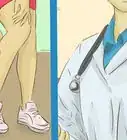This article was medically reviewed by Luba Lee, FNP-BC, MS. Luba Lee, FNP-BC is a Board-Certified Family Nurse Practitioner (FNP) and educator in Tennessee with over a decade of clinical experience. Luba has certifications in Pediatric Advanced Life Support (PALS), Emergency Medicine, Advanced Cardiac Life Support (ACLS), Team Building, and Critical Care Nursing. She received her Master of Science in Nursing (MSN) from the University of Tennessee in 2006.
There are 11 references cited in this article, which can be found at the bottom of the page.
wikiHow marks an article as reader-approved once it receives enough positive feedback. This article received 36 testimonials and 86% of readers who voted found it helpful, earning it our reader-approved status.
This article has been viewed 1,437,976 times.
One horse that nobody wants is the charley horse—that wickedly painful cramping or spasm of your leg muscles that will stop you in the middle of whatever you're doing. It can happen on any part of your leg, and always at the least opportune of times. Help yours to go away fast and prevent future charley horses by using the techniques described below.
Steps
Treating Immediately
-
1Massage the muscles. Charley horses are typically experienced in the calf, feet, and sometimes thighs; massage these areas to help reduce the pressure and painful cramping. Use medium pressure with your thumbs and fingertips in a circular motion at both the direct area of pain and slightly above it to improve circulation. Continue this for a few minutes until the pain subsides or you wish to move onto another treatment.[1]
-
2Stretch. Your muscles have become constricted as a result of spasms, so stretching will help to relax and soften them. Performing one or several stretches which elongate the muscles in the affected area should help to provide quick relief.[2]
- Stand up straight, and then get into a lunging position, with your back leg being the one experiencing the charley horse. Straighten out your back leg while keeping your front leg bent. This will force your weight onto the toes of your back leg; you can lean forward onto your bent knee slightly if it is more comfortable.
- Sit down on your bed or the floor and put your legs straight in front of you. Lock your knees, and point your toes back towards your face. Grab the toes and pull your foot backward slightly on the leg you’re experiencing the charley horse on.
- Stand up straight on your tippy-toes and hold it for as long as you can manage. This will stretch the calf muscles and reduce the spasming. Take a break every few seconds and then continue stretching.[3]
Advertisement -
3Take a bath. Fill your bathtub with warm water and Epsom salts and take a soak for 10-20 minutes. The heat and the salts will work together to soothe your tight muscles and distract you from the pain.[4]
-
4Elevate the area. Raise the affected area by propping it up on pillows or the armrest of a chair or couch. Elevating the area will help to improve your circulation and move blood to/from the spasming area more effectively.
-
5Apply heat followed by ice to ease the pain. To calm down the muscle spasms, use a hot compress for 10-15 minutes to relax the muscles. Then, immediately use an ice pack or cool compress on the area you’re experiencing the charley horse. Never apply ice directly, but wrap it in a towel or bandage before placing it on your skin. Do this for 5-15 minutes for the best results.[5]
Preventing Future Charley Horses
-
1Stretch regularly. If you are exercising or working out on a regular basis, proper stretching beforehand can prevent strain and future charley horses. Stretch for 2-5 minutes before performing any exercise. The best stretches for charlie horse prevention include quad stretches and lunges.
- To perform a quad stretch, stand straight up and bend one knee. Continue bending your knee as far as you can, and then grab your foot behind you and hold it for ten seconds.[6]
- To do a lunge, get in a kneeling position on the ground so that one leg is bent at the knee and you are resting completely on the other calf. Then, raise yourself off the ground so that both of your legs are bent. Do multiple lunges by walking around the room in that position, going back and forth between legs.[7]
-
2Consume more potassium. Low potassium levels are related to an increased likelihood of muscle spasms and cramps. Eat potassium-containing foods at least once a day including bananas, avocados, and oranges.[8] You can also look into getting potassium supplements from a local health foods store.
-
3Consume more calcium and magnesium. These vitamins work hand in hand in preventing muscle cramps and keeping your body in tip-top shape. Make sure you’re consuming enough calcium and magnesium by supplementing your diet with these minerals in the tablet form or in the foods you eat. Dairy products and nuts are full of the combo.[9]
-
4Keep hydrated. When sodium levels in your blood are high, it affects your muscles and circulation. Keep your sodium levels low by drinking plenty of water on a regular basis. When you’re working out, supplement your intake of water with sports drinks that have added electrolytes.[10]
- Limit or avoid drinking alcohol since it will dehydrate you.
-
5Avoid diuretics. Anything that causes you to urinate more will reduce the amount of water and electrolytes in your body, a no-go for muscle cramps. Avoid drinking too much caffeine and don’t take any pills that cause frequent urination whenever possible.[11]
Expert Q&A
Did you know you can get expert answers for this article?
Unlock expert answers by supporting wikiHow
-
QuestionWhat brings on charley horses during the night and wake you up?
 Luba Lee, FNP-BC, MSLuba Lee, FNP-BC is a Board-Certified Family Nurse Practitioner (FNP) and educator in Tennessee with over a decade of clinical experience. Luba has certifications in Pediatric Advanced Life Support (PALS), Emergency Medicine, Advanced Cardiac Life Support (ACLS), Team Building, and Critical Care Nursing. She received her Master of Science in Nursing (MSN) from the University of Tennessee in 2006.
Luba Lee, FNP-BC, MSLuba Lee, FNP-BC is a Board-Certified Family Nurse Practitioner (FNP) and educator in Tennessee with over a decade of clinical experience. Luba has certifications in Pediatric Advanced Life Support (PALS), Emergency Medicine, Advanced Cardiac Life Support (ACLS), Team Building, and Critical Care Nursing. She received her Master of Science in Nursing (MSN) from the University of Tennessee in 2006.
Board-Certified Family Nurse Practitioner
-
QuestionHow to get rid of charley horses in my foot?
 Luba Lee, FNP-BC, MSLuba Lee, FNP-BC is a Board-Certified Family Nurse Practitioner (FNP) and educator in Tennessee with over a decade of clinical experience. Luba has certifications in Pediatric Advanced Life Support (PALS), Emergency Medicine, Advanced Cardiac Life Support (ACLS), Team Building, and Critical Care Nursing. She received her Master of Science in Nursing (MSN) from the University of Tennessee in 2006.
Luba Lee, FNP-BC, MSLuba Lee, FNP-BC is a Board-Certified Family Nurse Practitioner (FNP) and educator in Tennessee with over a decade of clinical experience. Luba has certifications in Pediatric Advanced Life Support (PALS), Emergency Medicine, Advanced Cardiac Life Support (ACLS), Team Building, and Critical Care Nursing. She received her Master of Science in Nursing (MSN) from the University of Tennessee in 2006.
Board-Certified Family Nurse Practitioner To relieve a charlie horse or muscle spasm in your foot, stop the activity, gently massage your foot, and stretch the area as you deep breathe in deeply and slowly. Apply heat, stay hydrated, relax, and give yourself Epsom salt foot baths. After the pain subsides you may apply ice. If pain persists or frequently recurs, talk to your doctor about other options.
To relieve a charlie horse or muscle spasm in your foot, stop the activity, gently massage your foot, and stretch the area as you deep breathe in deeply and slowly. Apply heat, stay hydrated, relax, and give yourself Epsom salt foot baths. After the pain subsides you may apply ice. If pain persists or frequently recurs, talk to your doctor about other options.
References
- ↑ https://www.massagetherapy.com/articles/charley-horse
- ↑ https://www.shape.com/fitness/tips/relieve-charley-horse-cramps
- ↑ https://www.webmd.com/pain-management/muscle-spasms-cramps-charley-horse
- ↑ https://www.webmd.com/pain-management/muscle-spasms-cramps-charley-horse
- ↑ https://medlineplus.gov/ency/article/002066.htm
- ↑ https://www.dummies.com/health/exercise/how-to-do-a-standing-quad-stretch/
- ↑ https://www.huffpost.com/entry/how-to-do-a-perfect-lunge_b_5723172
- ↑ https://www.webmd.com/diet/foods-rich-in-potassium#1
- ↑ https://nutritiondata.self.com/foods-000122120118123000000-w.html
About This Article
To get rid of a charley horse, firmly massage the muscle that's cramping by rubbing in a circular motion with your fingers. If that doesn't help, try stretching the muscle by sitting down and pointing your toes or standing on your tiptoes. For a charley horse that won't go away, apply an ice pack to the muscle for 15 minutes or try taking a warm bath to alleviate the pain. To prevent future charley horses, drink plenty of water every day and make sure you stretch before exercising. To learn more from our Medical Review Board co-author, such as taking an Epsom bath, keep reading!
